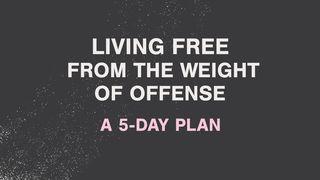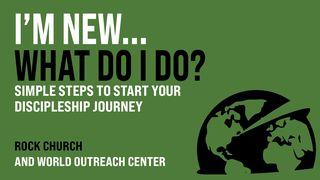Patterns for PeaceSample

Not Who, But How
In Luke 10 an expert in the Old Testament scriptures comes up to Jesus and asks Him a very pointed question. It says in verse 29 that he wanted to justify himself so he asks Jesus, “Who is my neighbor? In other words, he knew he was supposed to love people, but he wanted to know exactly who he was to love?
What’s interesting is that Jesus doesn’t answer the question about who to neighbor. Instead what He does is show us how to neighbor. He takes his question and places it on a dangerous curve between Jerusalem and Jericho. He doesn’t define our neighbor by offering us a theological definition. Instead, He gives us a life situation. Jesus implies that everybody is our neighbor and shows us specifically how to neighbor by telling the story known as "The Good Samaritan."
We learned earlier about the division and hatred between Jews and Samaritans. This was a cycle that had been going on for 700 years. They had a pattern of problems and a pattern of prejudice.
What made Jesus' story so shocking was that despite the preconceived feelings the Jews would have had towards this Samaritan, this Samaritan did one simple act. Instead of walking away from the man like the priest and Levite before him, he walked towards him. He demonstrated love to another human being even though he was from a different race, even though he had a different belief system, even though he had a different theology, even though they didn’t see the world the same way. It says that the Samaritan went to the victim, bandaged his wounds, put the man on his donkey, brought him to an inn and took care of him.
What was the difference? What caused the religious people to avoid the situation and what caused the Samaritan to get right in the middle of it?
We don’t know for sure, but perhaps the first question the priest and the Levite asked was, “If I stop to help this man, what will happen to me?” The Samaritan must have asked a different question. Maybe he reversed it and said, “If I don't stop and help this man, what will happen to him?”
This is the heart of the gospel. It’s loving God and loving others. It’s leaving where we’re comfortable to help someone who is in need. Even if they are different from us, and you could say, especially if they are different from us.
Questions for reflection.
How could the story of The Good Samaritan be applied to our modern context?
Do you try to justify yourself in your opinions and biases like the man who asked Jesus the question?
Scripture
About this Plan

What does it mean to be a peacemaker? In this 12-day devotional you'll learn from the words and life of Jesus coupled with video of Martin Luther King Jr.'s example. Discover how to speak up for the disadvantaged, the oppressed and other victims of injustice while always having words marked by a peace.
More
We would like to thank Velocity Church for providing this plan. For more information, please visit: http://findvelocity.org









